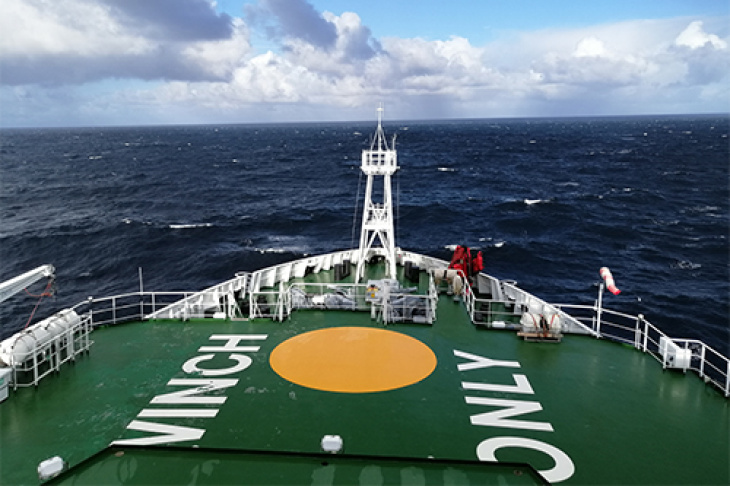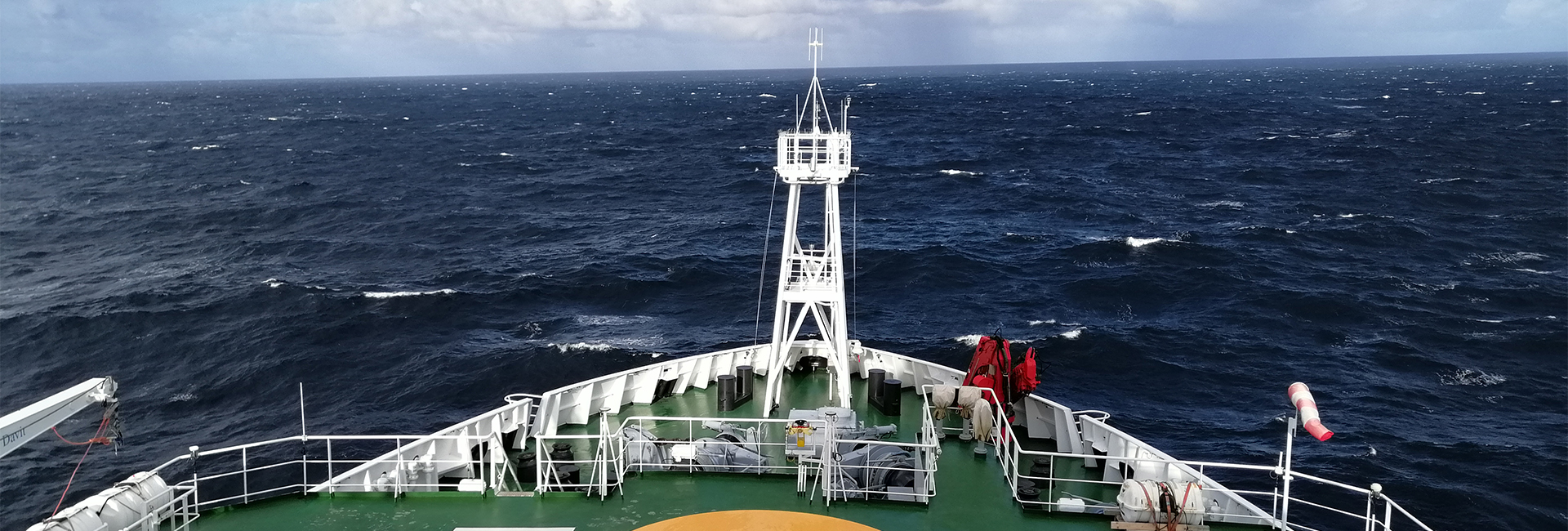Microplastics – Conducting research and raising social awareness
Between 19 and 21 million tons of plastic waste end up in the world’s waters every year. The trend has been rising strongly over the last decade. To meet the challenge and to solve these environmental problems, creating a broad societal awareness of the plastic litter and microplastics issue is crucial. Therefore, the Helmholtz-Zentrum Hereon has now developed a digital platform about plastic pollution and related topics.

View from the research vessel SONNE on a microplastics expedition. Photo: Hereon/ Tristan Zimmermann
Researchers from various disciplines at the Helmholtz- Zentrum Hereon, led by the Institute of Coastal Environmental Chemistry, aim to raise public awareness of global plastic and microplastic pollution. In addition, specialists from other centers of the Helmholtz Association and universities contributed articles on selected topics.
Finally, the so-called "Microplastic Compendium" was recently published online. The digital application is an information platform on the subject of plastic and microplastic pollution. It informs about associated risks, transport routes and underlying scientific studies. The compendium, abbreviated as MPC, addresses a broad readership and contains condensed information on many scientific aspects in the microplastics field. Topics such as drinking water, food, transport routes, various ecosystems such as arctic regions, political initiatives, research projects, but also possible solutions and related topics such as tire wear are discussed.
The MPC is part of the Coastal Pollution Toolbox, a one-stop shop for researchers and anyone involved in tackling coastal and marine pollution from all types of pollutants and nutrients. Regardless of whether they are organic or inorganic, traditional or new in nature - or involved through the dynamics of nutrients and carbon. The MPC is a dynamic, lively platform that integrates current knowledge on the subject and will react to upcoming multidimensional requirements. The MPC will continuously evolve in the future and include contributions about other key areas of global environmental impact related to microplastic: “We invite scientists from our growing partner network from various fields of pollutant research to contribute with their work and expertise to our compendium. With a content-rich information product like this, we provide knowledge for interested end users to create awareness of the societal challenges associated with the global microplastic issue," says Dr Marcus Lange, Coordinator of the Hereon Institute for Coastal Environmental Chemistry. The MPC is a milestone for the relevant research and the information about it.
Backround
Once introduced into the marine environment, plastic waste can remain in our waters for many years. The World Wide Fund For Nature (WWF) suspects that marine life may be significantly affected by plastic waste. According to estimates by Canadian scientists, every person takes up between 74,000 and 121,000 microplastic particles and fibers in the size range of 0.001 - 5 millimeters each year. Particles are taken up through food and the air we breathe. Thus, environmental activist have coined the term “plastic crisis”. Microplastics pose a high risk, as organisms can easily ingest them due to their size.
As other pollutants the global flows of microplastics do not stop at national borders. Rivers as well as the atmosphere play a key role in the transport of microplastics. Experts assume that a large share of marine plastics and microplastics stem from land-based sources. Uncontrolled and illegal disposal or weather events are driving factors. Therefore, only global action can tackle the plastic crisis. Different initiatives at either national or international level address plastic pollution. The fifth United Nations Environment Assembly (UNEA) in Nairobi recently gave the mandate to negotiate a global plastics agreement. The mandate aims at a binding regulation of all areas of the environment along the entire life cycle of plastic products - from production to consumption to disposal.
Seeking for smallest plastic particles
Scientists from the Helmholtz-Zentrum Hereon carry out extensive research both on the occurrence of microplastics in the environment and on the interactions between microplastics and co-pollutants. Prof Ralf Ebinghaus, Head of the Institute of Coastal Environmental Chemistry at the Helmholtz-Zentrum Hereon, says: "Depending on their type, size and residence time in the environment, microplastic particles contain a diverse mix of chemicals. Some of such substances are added deliberately during production, and others subsequently accumulate on the particle. In both cases, these chemicals can be harmful to environmental and human health, as they can enter the food chain and finally the human organism like a 'Trojan horse'. Therefore, it is crucial to address such risks by a global plastics treaty or as part of the establishment of a science-driven policy committee on chemicals and microplastics.”
Further Information
Contact
Institute of Coastal Environmental Chemistry
Helmholtz-Zentrum Hereon
Institute of Coastal Environmental Chemistry
Helmholtz-Zentrum Hereon
Communication and Media
Helmholtz-Zentrum Hereon
